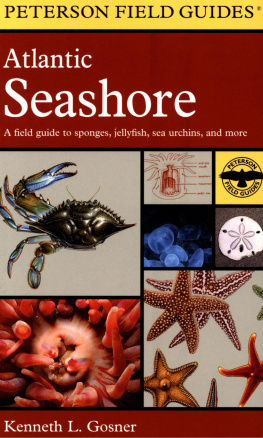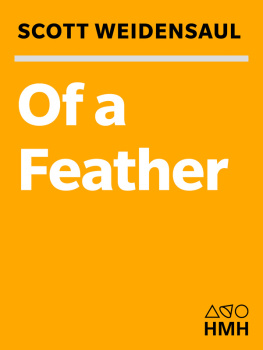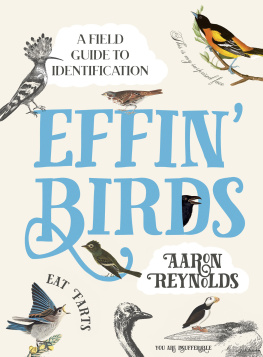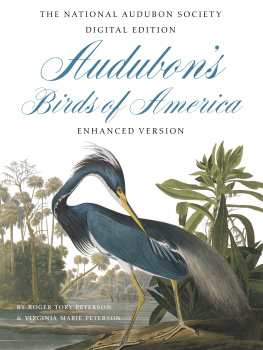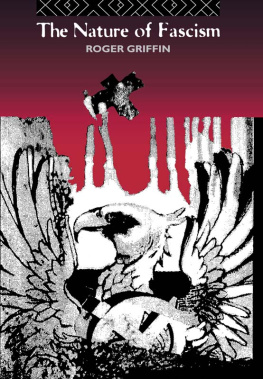Acknowledgments
Thanks to my publisher, Rowman & Littlefield, and my editor, Emily Tyler, for initiating this reprint of the book.
So many people have assisted in the genesis and evolution of this book that it will probably be impossible to acknowledge everyones contributions, but I will try. To say that Laurie Lewin Simms and Arthur Klebanoff put me on the right track would be an understatement; they were generous with so many things I wouldnt know where to begin. Thanks to Jim Berry and Marlene Mudge for allowing me to nose around in the archives at the Roger Tory Peterson Institute of Natural History and tolerating my innumerable follow-up questions. (For more information about the RTPI, go to www.rtpi.org, or call 1-800-758-6841.)
Of course, I am thankful to everyone who agreed to be interviewed for this book. I hope I made the process bearable for them. Their names are listed at the end, under Sources. Also, all who provided photographs deserve thanks. Photographic credits accompany each photo reproduced in this book. Additionally, I am beholden to those who shared their papers with me. I was especially touched by a few peopleparticularly Frank Graham Jr., C. Stuart Houston, and Susi Hickey Nehlswho entrusted me with original letters and other documents. The chapter-by-chapter bibliography identifies all documents and other sources I used in telling the Roger Tory Peterson story.
Susan Roney Drennan and Paul Spitzer reviewed the entire manuscript and offered helpful suggestions; Peter Ames and William J. L. Sladen also read portions of the manuscript and schooled me on scientific points. (Any errors that may remain are my own.)
My husband, Stan, was the first person to read my manuscript in its various stages. I couldnt have done without his wisdom. For their friendship, moral support, and advice, I thank Denice Shuba and Jim McKay.
Thanks to Roland Clement and Kenn Kaufman for kindly (but separately) treating me to lunch during hours-long interview sessions in Hamden, Connecticut, and Cape May, New Jersey. More thanks to Lee and Courtney Peterson, who opened their home to me to chat, leaf through old letters and articles, and bask in the attention of their friendly dogs. I felt honored to sit down twice with the warm and friendly Barbara Peterson, the most important person in Roger Tory Petersons adult life.
Keith Bildstein, Sarkis Acopian director for Conservation Science at Hawk Mountain Sanctuary in Pennsylvania, opened up the sanctuarys archives to me, made me feel at home, and ensured the availability of photos and recordings. Thanks also to Andrea Zimmerman of the sanctuary.
Thanks to the professional, hard-working staff of the New York Public Library, Manuscripts and Archives Division, under whose watchful eyes, over many days, I sifted through the same decades-old letters, memos, and other documents handled by pioneering conservationists.
I appreciate the efforts of the staff of the Smithsonian Institution Archives who were welcoming and helpful.
Ellen Collard, public relations director at Mill Pond Press, worked hard to dig up old papers and photos and graciously weathered my frequent inquiries.
Exceptional efforts in securing photos were provided by Clem Fisher, curator of birds and mammals at the World Museum Liverpool, England; Tom Schaefer of the Hog Island History Project; and Gustave Yaki.
Also helping with photos were Lynda DeWitt, Audubon Naturalist Society; Coi E. Drummond-Gehrig, Denver Public Library; Nancy Greenspan, executor of the Shirley Briggs estate; David Hosking, Hosking Charitable Trust; Rudolf Koes; Judith Magee and Jamie Owen, British Natural History Museum; Karen Mason, curator of the Iowa Womens Archives, University of Iowa; Peter Mott, president, New York City Audubon Society; Nancy Severance, director of marketing communications, National Audubon Society; Marcia Theel, associate director, Leigh Yawkey Woodson Art Museum; Dick Thomas, director, Alumni Relations, Chewonki Foundation; Dave Vargas, Lindblad Expeditions; and Melissa Watterworth, curator of Literary, Natural History, and Rare Book Collections, Thomas J. Dodd Research Center, University of Connecticut.
Thanks to James Ferguson-Lees, Fleur Ngweno, and Keith Shackleton for their friendship, enthusiasm, and insight, and also to Jasper Shackleton for his thoughtfulness.
Others investing time to help include Nancy Archibald; Howard Brokaw; Pamela Fingleton, Lindblad Expeditions; Clifford Hence; P. A. D. Hollom; Robert Koenke, editor and publisher of Wildlife Art; Christine Lietch; Ursula Livingston; George McAfee; and Carmen Thorndike, executive assistant at the H. John Heinz III Center for Science, Economics and the Environment.
For answering some of my more obscure questions, thanks go to Walter J. Bock, professor of evolutionary biology, Columbia University; Paul Buckley, Royal Society for the Protection of Birds; Robert M. Chipley, international programs officer, American Bird Conservancy; Lisa Clark, World Wildlife Fund; Deborah Edge; Stephen Edge; Alistair Gammell, Royal Society for the Protection of Birds; Nancy Keeler, vice president for development, Academy of Natural Sciences; Charles Lee, Florida Audubon Society; Katie Clare Mazzeo; Alison Pirie, Department of Ornithology, Harvard University; Robert Risebrough, Bodega Bay Institute; Andrs Marcelo Sada; Ian Wallace; and John C. Wingfield, professor of biology, University of Washington.
Joe DiCostanzo and Alan Messer, Linnaean Society of New York; Lori Fujimoto and Bryan Patrick, the American Birding Association; and Peter Alden tracked down elusive printed matter for me.
These acknowledgments wouldnt be complete without mentioning my family, who continue to provide me with moral support and encouragement; my bosses Marge Schwartz and Hank Maurer, who granted me a leave of absence to write this book; and my Nanuet High English teacher, Karen Achille, who liked my writing and introduced me to the fundamentals of research and note taking.
Chapter One
Boy Rebel to Boy Wonder
I go out into the woods, and every bird and flower I see stirs me to the heart with something, I do not know what it is; only I love them: I love them with all my strength.... They are my Bible. This is my nature.
Ernest Thompson Seton, Two Little Savages
In 1908 President Theodore Roosevelt invited to the White House fellow members of the Audubon Society of the District of Columbia, as well as friends and cabinet officials, to watch the first movies taken of wild birds. It had been five years since an executive order established the first federal bird sanctuary in the nation, Pelican Island, in the Indian River near Floridas east coast. Roosevelts action was an important early response by government to the widespread slaughter of birdsin this case, wading birds such as herons and ibisesin service of the millinery trade, which hired people to kill birds that fashionable Victorian women could wear on their heads.
Roosevelts local Audubon Society was one of many that had recently sprouted in response to the milliners. Among the oldest was the Massachusetts Audubon Society, founded by women horrified by the destruction of heronries as orphaned nestlings were left to starve. Various Audubon Societies, and some proactive individuals, had cobbled together a wobbly network of local bird protection laws and privately hired wardens to stave off hunters through persuasion, education, and old-fashioned law enforcement.
Frank M. Chapman was one such proactive individual. An ornithologist employed by the American Museum of Natural History in New York, in 1899 he founded Bird-Lore magazine, which helped tie the disparate Audubon societies together and spread knowledge of and love for avifauna. One year later, as a nonviolent alternative to the gun-toters Christmas Hunt, he advocated the establishment of the Christmas Bird Count, a bird population tally by birdwatchers. William Dutcher, an officer of the American Ornithologists Union (AOU) who steered that organization toward bird protection with limited success, eventually realized that the patchwork of bird preservation groups needed some centralizing force. In 1905, with the help of a benefactor, he founded the National Association of Audubon Societies. That same year a thirty-five-year-old husband and father named Guy Bradley, employed as a warden in the Florida Everglades, was murdered by plume hunters. The Audubon movement had its first human martyr, turning outrage into activism.


